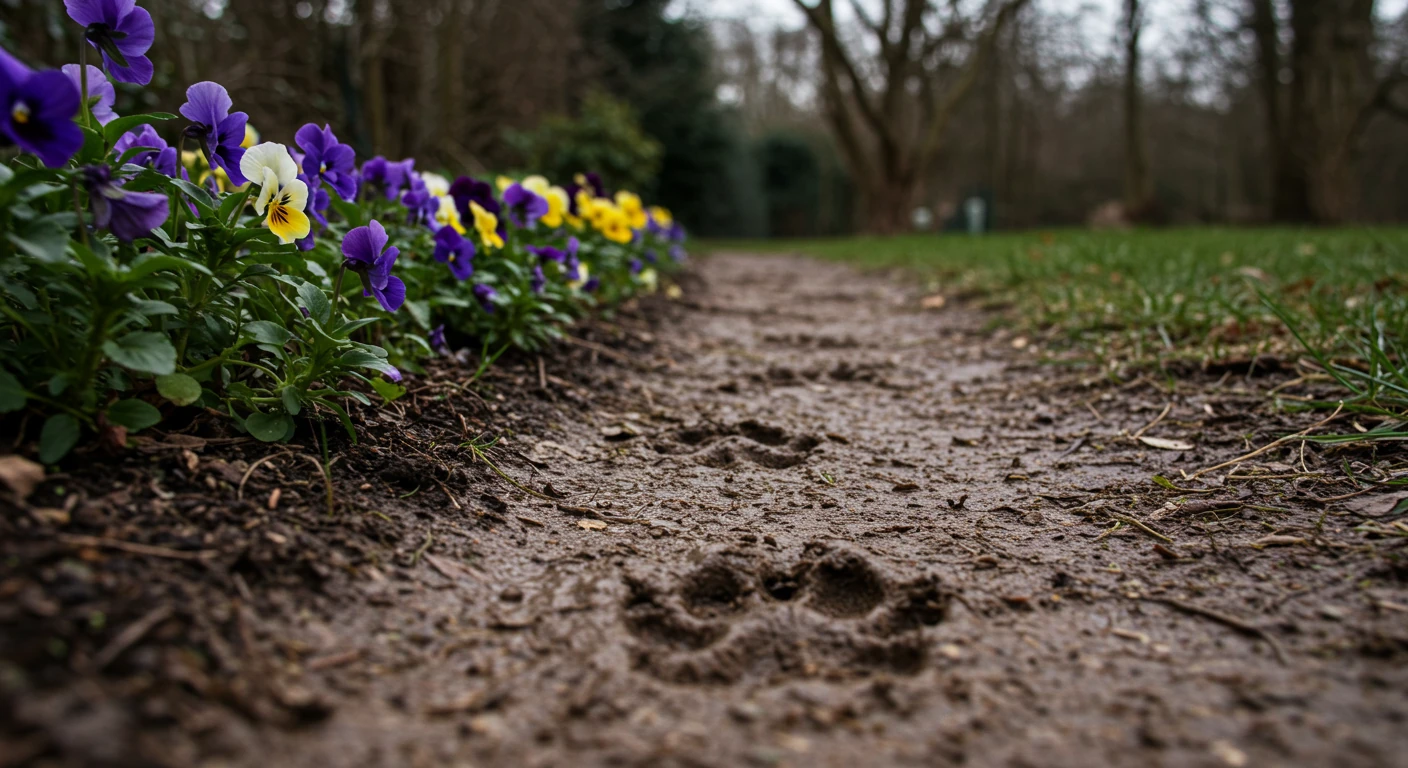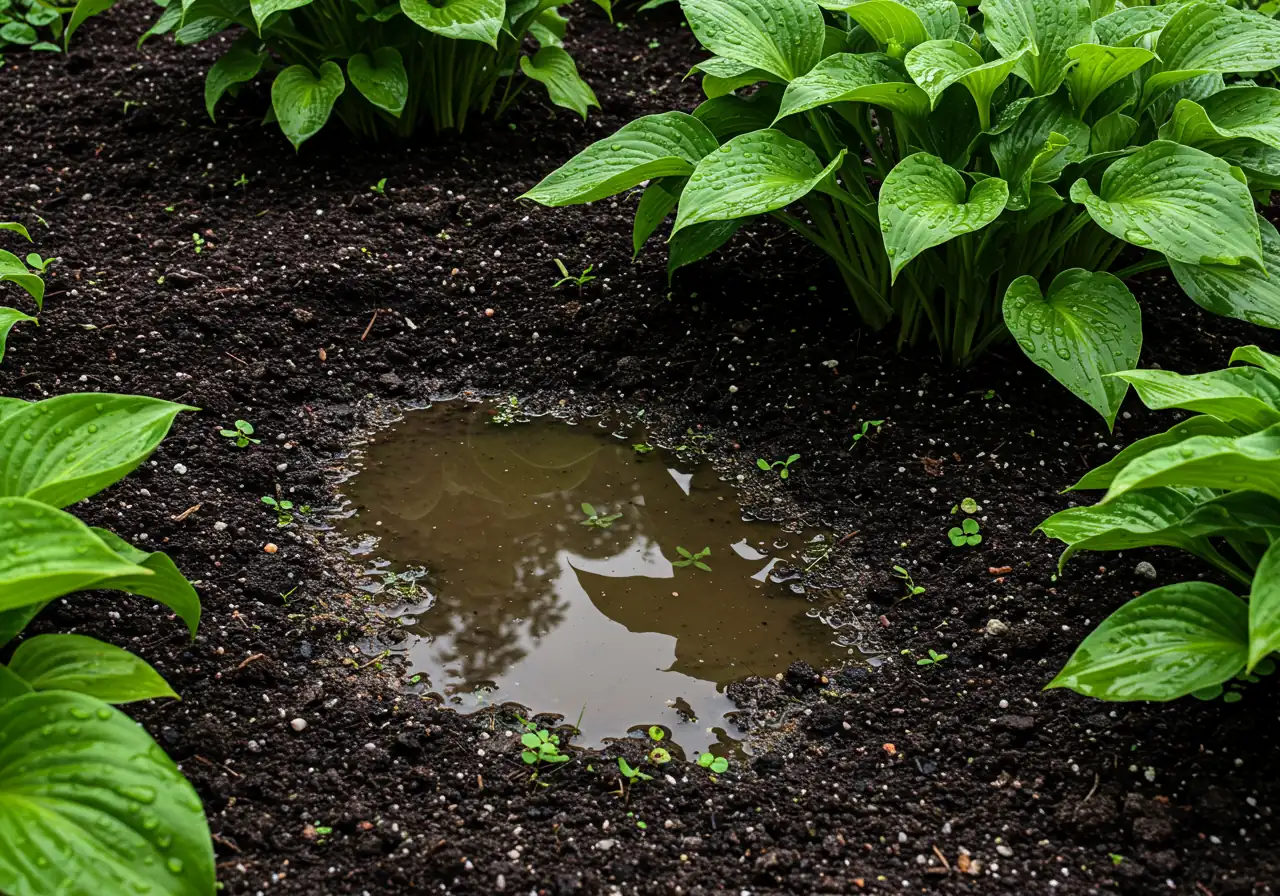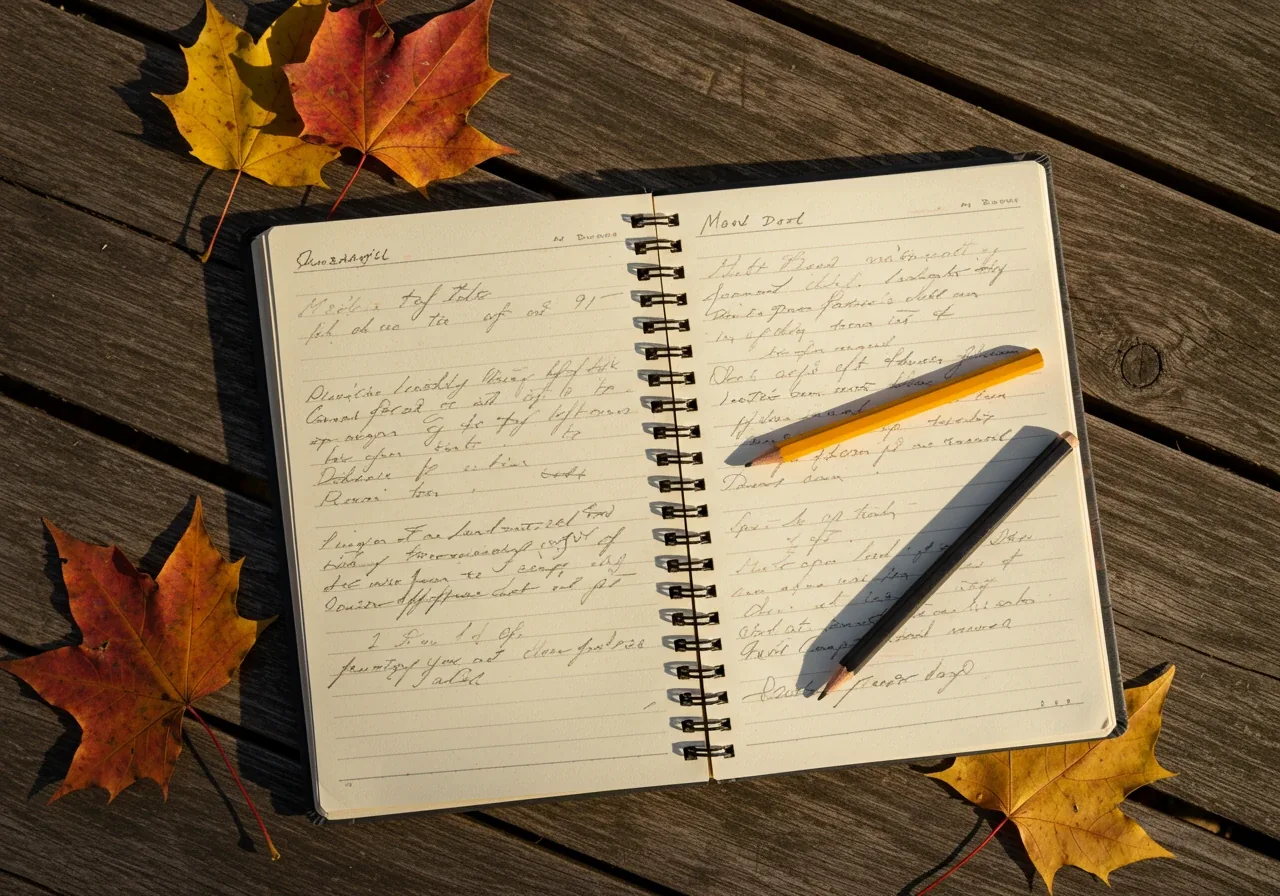Embrun Fall Garden Records: Prevent Costly Spring Mistakes
Quick Summary
- Forgetting fall garden observations leads to repeated spring mistakes, costing time and money.
- Simple fall record-keeping (notes, photos) helps remember plant performance, pest issues, drainage problems, and soil conditions.
- Use fall notes to create a targeted spring action plan for tasks like dividing plants, amending soil, and managing pests.
- Choose a record-keeping system that works for you (notebook, digital app, photos).
- Translate notes into actionable spring tasks, schedules, and smart shopping lists.
Ready to plan for a stress-free spring garden? Get expert help tailored to your yard's needs.
Request Your Quote TodayIntroduction: Oops, I Did It Again! (Avoiding Spring Garden Regrets in Embrun)

Ah, spring in Embrun! The snow melts, the birds sing, and... oops! You've done it again. Remember vowing last fall that you'd never plant those delicate flowers near the path where the dog always runs? Or maybe you swore you'd divide those overgrown hostas, but now you can't recall exactly which ones were the culprits? It’s easy to forget those crucial fall observations after a long Ottawa winter. We get excited about spring planting and dive right in, repeating the same little landscaping blunders. That sunny spot gets the shade lovers, the soggy patch gets plants that hate wet feet – classic garden regrets!
But what if you could avoid that "déjà vu" feeling? The solution is simpler than you think: fall record-keeping. Taking just a few notes now, while last season's successes and failures are clear in your mind, is the key. It helps you remember where the drainage was poor, which perennials truly thrived, or where that patch of soil needed a bit more compost before winter. Let's turn those fall lessons into spring success and make next year's garden your best one yet!
Why Your Garden Forgetfulness is Costing You More Than Just Flowers

We've all been there. Standing in the garden centre in spring, full of enthusiasm, but drawing a complete blank on why that spot by the fence looked so sad last year. Was it too much sun? Not enough water? The wrong kind of soil? That little bout of garden amnesia might seem harmless, but trust us, it often costs more than just a few wilted petals. Your memory lapses can hit your wallet, your weekend time, and even the long-term health of your yard.
The Repeat Purchase Problem (Wallet Woes!)
It sounds simple, but how often have you bought a plant, put it in the "perfect" spot, watched it struggle, and then... done the exact same thing next year? Forgetting why a plant failed – maybe it hated the heavy clay soil common in parts of Embrun, or couldn't handle the blazing afternoon sun – means you're likely to repeat the mistake. That's throwing money away on plants doomed from the start. Keeping notes helps you learn from experience. Maybe that spot needs plants better suited to tricky conditions; understanding Embrun fall plant care and clay soil solutions can save you buying unsuitable replacements year after year.
Wasted Weekends (Time is Money, Too!)
Your time is valuable! Forgetting which tasks needed doing means you spend precious spring hours figuring things out all over again, or worse, fixing problems that popped up because you forgot. Remember noticing that really compacted patch of lawn where the grass looked thin? If you forget, you might miss the ideal time to address it, leading to more work later trying to revive it. Simple notes like "back lawn needs help" could save you hours and lead to better results, perhaps prompting timely action like overseeding your Embrun lawn for thicker grass or remembering the importance of lawn aeration for soil health.
Inviting Pests and Problems
Did you battle powdery mildew on your phlox or aphids on your roses last summer? Forgetting where these problems occurred means you might not take preventative steps in the spring. Those pests or diseases could have overwintered nearby, just waiting for another chance. Ignoring issues like poor drainage noted in the fall can also weaken plants, making them more susceptible to attack. Sometimes, these drainage issues aren't just in the garden beds. That soggy patch near your foundation you mentally flagged last fall? Forgetting about it could lead to much bigger, costlier problems than just unhappy plants. It might be a sign you need to investigate spring site grading to prevent water damage on new builds or existing homes.
Missed Opportunities & Bigger Cleanups
Forgetting isn't just about avoiding negatives; it's also about missing positives! Did you notice those hostas in your Barrhaven garden getting huge and plan to divide them? Forgetting means they become overgrown, potentially choking out neighbours and looking less attractive. Letting small issues slide because you forgot about them often leads to a much larger task later. That small patch of weeds you meant to tackle becomes a jungle; the leaves you forgot to clear become a soggy mess. This neglect can mean needing a more intensive Embrun yard cleanup service come spring than if you'd kept track.
Hidden Costs of Forgetting
Taking a few moments in the fall to jot down notes – what thrived, what died, what looked sickly, where water pooled – is a small investment that pays off big. It saves you money, time, and the frustration of repeating mistakes. And if life gets too busy, remember that professional help is always an option to keep your landscape thriving with less stress on your memory banks. Explore our landscaping and gardening services to see how we can help.
Your Fall Garden Audit: What Secrets Should Your Notebook Hold?
Okay, grab your favourite notebook (or even just the back of an old envelope, we won't judge!) and maybe a warm drink. It’s time for your fall garden audit! Think of this as creating a cheat sheet for your future spring self. Forget trying to remember everything after a long Ottawa winter; let's jot down the juicy details now while they're fresh. Don't aim for perfection, just practicality. What secrets should your notebook hold?

1. Plant Performance Review (The Good, The Bad, and The Leggy)
This is where you play garden detective. Go bed by bed and make notes:
- Heroes & Villains: Which plants were superstars this year? Note them down! (Example: "Daylilies in the front bed near the walkway – amazing! Divide next year?") Equally important: who struggled? (Example: "That expensive hydrangea near the downspout – looked sad all summer. Too wet?") Be specific about which plant and where.
- Size Matters: Did anything get too big for its britches? Or maybe something failed to thrive and stayed disappointingly small? (Example: "Hostas beside the Metcalfe garage are HUGE, crowding neighbours. Plan to divide." or "Coral bells barely grew – maybe needs more sun?") Proper garden maintenance includes managing plant size.
- Bad Habits: Note plants that flopped over, needed constant deadheading just to look decent, or spread way too aggressively. (Example: "Bee balm went wild, needs serious reigning in next spring.")
- Annual Autopsy: Where did your annuals shine, and where did they fizzle? This helps plan next year's containers and bedding spots. (Example: "Petunias in hanging baskets – great! Impatiens under the maple – meh.") Consider garden installation options for next year based on this.
2. Pest & Disease Diary (The Uninvited Guests)
Recalling specific pest or disease outbreaks is crucial for prevention next year.
- Who Bugged You?: Aphids on the roses? Slugs dining on the hostas? Lily beetles munching away? Write down the pest and the affected plant. (Example: "Sawfly larvae skeletonized the weeping pear again. Need dormant oil spray early spring.")
- Fungal Foes: Did powdery mildew cover the phlox? Black spot plague the roses? Note the disease and location. (Example: "Powdery mildew bad on Monarda back corner – improve air circulation? Thin it out?") Knowing where problems occurred helps you target treatments or choose more resistant varieties next time.
3. Soil & Site Conditions (The Lay of the Land)
Think about the physical environment of your garden.
- Drainage Dramas: Where did water pool after heavy rains? Are there soggy spots where plants rotted? Or areas that dried out instantly? (Example: "Low spot by the back fence stays wet – consider raising the bed or choosing water-loving plants.") Understanding drainage is key for successful soil preparation next spring.
- Sunlight Shifts: Did you notice areas that became shadier (or sunnier) as trees grew? Was that "full sun" spot actually shaded by the house by mid-afternoon? (Example: "Spot where tomatoes failed only gets morning sun now – move them next year.")
- Soil Secrets: Did any areas seem particularly compacted, sandy, or heavy clay? Did plants in one section consistently underperform? (Example: "Soil in the new side bed feels like concrete. Needs lots of compost!") Check out info on material selection for amendments.
4. Structures & Hardscaping Check-Up (The Bones of the Garden)
Look beyond the plants.
- Paths & Patios: Are pavers uneven? Is gravel scattering? Does the patio need cleaning or repairs?
- Fences & Features: Is the fence leaning? Does the bird bath leak? Is the trellis wobbly? (Example: "Gate latch broken. Fix before winter.")
- Lawn Edges: Are garden beds creeping into the lawn (or vice-versa)? Note areas needing re-edging, possibly as part of mulching and edging services.
5. Future Plans & Wish List (Dreaming Big!)
What changes are you pondering for next year?
- Moves & Divisions: List plants you intend to move, divide, or remove entirely.
- New Ideas: Thinking of adding a new garden bed, a shrub, or trying vegetable gardening? Sketch it out!
- Help Needed?: Be honest! Did the leaf cleanup feel overwhelming? Are some tasks just too big? Noting this now helps you plan. Maybe a professional fall tidy-up is the answer. Whether you need a full Metcalfe property cleanup service for leaves and debris, or just focused help with the beds via a Metcalfe garden clean up service, acknowledging it now saves spring stress. Even smaller city lots can benefit from a hand; consider options for a city garden clean up service if you're feeling buried in chores. If you're in Ottawa itself, look into Ottawa property cleanup or Ottawa garden cleanup options. For Marionville residents, there's Marionville garden clean up and Marionville property cleanup.
Simple Audit Summary Table:
| Category | Key Points to Note | Example Note |
|---|---|---|
| Plants | Winners, losers, size issues, bad habits, annual spots | "Peonies flopped, stake earlier next year." |
| Pests/Disease | Specific pest/disease, affected plant, location | "Aphids on roses near shed." |
| Soil/Site | Drainage issues, sun exposure changes, soil texture | "Back corner too wet for lavender." |
| Structures | Repairs needed (paths, fences, features), edging | "Fix loose step on deck." |
| Future Plans | Moves, divisions, new projects, areas needing help | "Divide hostas. Get quote for cleanup?" |
Don't overthink it! A few concise notes are far better than none. This fall audit is your secret weapon against spring garden regrets. And if looking over your list makes you realize you need an extra pair of hands, don't hesitate to contact us to discuss how we can help make next year's garden your best one yet!
Record-Keeping Rhythms: Finding a System That Sticks (No Fancy Degree Needed!)

Okay, let's talk record-keeping. Don't let the term scare you off! You don't need a PhD in Plant Pathology or fancy software that costs more than your prize-winning pumpkin. Finding a "record-keeping rhythm" is just about finding a super simple way to remember what happened in your garden this year, so you're not scratching your head next spring. Seriously, any system is better than relying on fuzzy winter memories after months buried under Ottawa snow. The goal? Fewer "Oops, did I plant weeds there on purpose?" moments.
Old School Cool (Notebook & Pen)
- Pros: Super simple, no batteries required, feels satisfyingly real.
- Cons: Can get misplaced (uh oh!), handwriting legibility might be an issue (no judgment!), not easily searchable.
- Tip: Keep it tucked inside your gardening gloves or on a hook by the door.
Digital Digging (Notes App/Spreadsheet)
- Pros: Always accessible, searchable (Hallelujah!), easy to add quick photos.
- Cons: Requires a charged device, potential for digital clutter if you don't organize.
- Tip: Create a dedicated "Garden Notes 2024" file. Use tags like #Hostas #Divide #Shade.
The Photo Finish (Visual Diary)
- Pros: Quick capture, great for seeing progress or identifying mystery plants later. Seeing past successes can inspire future plans, much like browsing inspiring garden transformations.
- Cons: Needs context! Add captions or short notes, otherwise it's just pretty (or scary) pictures.
- Tip: Create a specific phone album. Date your photos clearly!
Ready to try? It’s easier than wrestling bindweed:
- Pick Your Method: Notebook, phone, carrier pigeon (okay, maybe not the last one).
- Quick Walkabout: Stroll through your garden today.
- Note 3-5 Things: What thrived? What flopped? What needs attention next spring (like that massive leaf pile or overgrown shrub)?
- Snap Happy (Optional): Take a few reference pics if using digital.
- Stash Safely: Put your notes somewhere Future You will actually look!
Even if you're renting a place in Nepean with just a few pots on the balcony, noting that the basil loved the morning sun but the peppers sulked helps you plan for next year's container garden success. It’s all about learning your specific little patch of earth. Check out resources like the Master Gardeners of Ottawa-Carleton for local advice.
These simple notes help you plan smarter. Maybe you realize the yearly leaf invasion requires backup – noting that down might lead you to seek help from a general Ottawa property cleanup service for the whole yard, or perhaps a focused Ottawa garden clean up service if it's mostly the garden beds giving you grief. If your notes highlight a really big job on a larger property, like in areas surrounding the city such as Metcalfe, knowing the scope helps when looking into something like a specific Metcalfe property cleanup service or Metcalfe yard cleanup service. Getting ideas for bigger tasks? Use your notes to get accurate quotes; you can even see what others thought via estimate feedback from past clients. And naturally, before booking any service you've identified as needed from your excellent record-keeping, it's wise to understand the details; you can find ours explained in our straightforward terms and conditions. Don't forget smaller city lots, where a city property cleanup service or city yard cleanup service can be invaluable.
See? No fancy degree needed, just a willingness to jot down a few secrets your garden tells you in the fall!
From Fall Notes to Spring Success: Activating Your Garden Game Plan
Okay, you survived the fall garden audit and have your trusty notes – fantastic! Maybe you scribbled them down during a chilly afternoon in Barrhaven, or perhaps you snapped photos between raking leaves. Now, let’s turn those brilliant (or slightly muddy) observations into your action-packed spring garden game plan. Think of your notes as the secret recipe, and spring is when we start cooking!
Decoding Your Notes for Spring Action:
It's easy to forget the why behind those notes after a long Ottawa winter. So, grab a coffee, pull out your notebook or phone file, and let’s translate those fall scribbles into smart spring moves.
- The Spring Kick-Off Review (Late Winter/Early Spring): Before the gardening centres explode with tempting blooms, re-read everything. Remind yourself: Why did those beans fail? ("Ah yes, note says 'only gets morning sun now'"). Why did I want to move that shrub? ("Got HUGE, blocking the window!"). This refresh stops you from making the same mistakes or forgetting brilliant ideas.
- Task Triage - What Needs Doing First?: Look for action items. Your notes are clues!
- "Hostas monster-sized, crowding neighbours" -> Action: Schedule dividing them early in spring.
- "Soil in new bed feels like concrete" -> Action: Add "buy compost/manure" to shopping list; plan time for soil amendment before* planting. Good lawn care often starts with good soil.
- "Sawfly larvae on weeping pear again" -> Action: Research and schedule dormant oil spray application at the right time.
- "Lawn looks patchy and sad near driveway" -> Action: Plan for spring aeration and overseeding, or if it was really bad, maybe start budgeting for professional sod installation for a fresh start.
- "Felt overwhelmed by leaf cleanup" -> Action: Decide now if you'll tackle it yourself or schedule help. For larger properties, booking a Metcalf yard cleanup service early ensures it gets done. For smaller city lots, a dedicated city property cleanup service might be the ticket.
- Map It Out - Layout & Shopping List: Use your plant performance notes!
- Layout: Where did plants struggle due to sun/shade changes? Use your notes to sketch a new layout. ("Move shade-loving ferns here, sun-loving coneflowers there.") Get inspired by looking at photos of successful garden transformations featuring smart layouts.
- Shopping: Your "plant failures" list is your "do not buy again for this spot" list. Your "wish list" or notes on successes ("Daylilies amazing!") guide your purchases. Need replacements? Now you know what conditions the plant needs (more sun, better drainage, etc.). Find more gardening tips from resources like the Friends of the Central Experimental Farm.
- Schedule Smart - Your Garden Calendar: Don't try to do everything at once! Use your prioritized task list. See the timeline below for ideas.
- Pest Prevention Power-Up: Your pest/disease diary is gold!
- "Powdery mildew on phlox" -> Action: Plan to thin plants early for better air circulation, avoid overhead watering, have fungicide ready if needed before it takes hold.
- "Aphids coated roses" -> Action: Schedule regular checks starting mid-spring, have insecticidal soap on hand, maybe plant some beneficial insect attractors nearby. Our Google Business Profile often features seasonal tips!
Simple Spring Timeline Idea:
MARCH
Review Notes | Order Seeds | Early Cleanup (if possible)
APRIL
Finish Cleanup | Amend Soil | Dormant Spray | Divide Early Perennials | Consider Booking Ongoing Garden Maintenance Help if notes showed too much work
MAY
Plant Frost-Tender Plants | Mulch Beds | Stake Floppy Growers | Start Pest Patrol | Perhaps book city garden maintenance service for smaller urban spaces needing regular upkeep.
JUNE
Water Wisely | Continue Pest Patrol | Enjoy!
By using your fall notes, you move from reacting to problems to proactively planning for success. Your future self (the one relaxing in a beautiful, thriving garden) will definitely thank you!
Highlight Box: Ottawa Gardener's Quick Wins from Fall Records
Turn those fall scribbles into spring smiles! Remembering last season's quirks is your secret weapon for a better Ottawa garden next year. Here are quick wins unlocked by simple fall notes:
- Beat the Heave: Noted frost heaving near your Manotick path last fall? Fall records remind you to check those vulnerable spots first in spring and perhaps rethink your groundcover by choosing the right mulch this year.
- Clay Soil Smarts: Remember that soggy spot where plants drowned? Your note pinpoints where spring soil amendment is crucial before planting. Tackling big amendments can even be part of focused garden bed cleanup help in areas like Marionville if you need an extra hand.
- Pest Patrol Prep: Saw Japanese Beetles skeletonizing your roses? Notes mean targeted spring vigilance exactly where they hit, saving time and plants. You can learn more about our team's approach to integrated pest management, too.
- Snow Strategy: Did heavy Ottawa snow flatten that favourite shrub? Your fall note is a prompt to wrap or shield vulnerable plants before the first big dump, reducing damage and the need for extensive help with cleanup on city lots come spring.
- Privacy Planting Power: Realized last fall you needed more screening from neighbours? Notes on sunny/shady spots guide better plant choices this year. We always respect your yard goals and plans; see how we handle your garden notes info securely.
Local resources like the City of Ottawa's gardening page can also offer guidance.
FAQ: Your Burning Fall Garden Record Questions (Embrun Edition)
Ideally, aim for late summer or early fall before everything turns brown or gets buried! This lets you see plants at their peak (or weakest), spot lingering diseases on leaves, and assess flower performance. But hey, even notes taken after leaf drop are way better than none – you can still assess structure, bare soil issues, and lingering seed heads.
Great question! With clay, focus on drainage. Note exactly where water pools after rain or snowmelt, which plants looked yellow or rotted (classic wet feet!), and areas where the soil baked hard and cracked in summer. Also, note spots where plants thrived – these are clues for future planting success! Poor drainage notes might highlight areas needing amendment or better definition through mulching and edging services.
Don't beat yourself up! It's never truly too late. Focus now on structure – which shrubs look overgrown? Where are the gaps? Note lingering dead stalks (potential disease hideouts?). Check for low spots holding water. If the mess feels overwhelming, your notes can help prioritize spring tasks or decide if help like a Marionville yard cleanup service for targeted assistance, or a broader Ottawa yard cleanup service, is needed.
Not at all! Even small spaces benefit hugely. Note which corner got blasted by afternoon sun, which containers dried out constantly, which veggies bolted early, or where the aphids partied. This prevents repeating mistakes and wasting money on plants unsuited to your specific microclimate. Maximizing success in small spaces is super rewarding!
Your notes are fantastic communication tools! Instead of saying "my garden needs help," you can provide specifics like "Hostas by the porch need dividing," "Need leaf removal from under the big oak," or "Requesting quote for improving drainage along the west fence." This detail helps professionals give accurate estimates for anything from specific tasks to a complete property clean up. We always appreciate clear info – it helps us help you better, which is why our clients often leave happy feedback (like you might see mentioned on our Thank You page after getting in touch)!
Conclusion: Plant Smart Notes This Fall, Harvest Garden Bliss Next Spring!
So, there you have it! The not-so-secret secret to avoiding those "Oops, not again!" spring garden regrets is simple: plant some smart notes this fall. Taking just a few minutes now* to remember what worked, what didn't, and where that mystery puddle always appears in your Ottawa yard is your ticket to harvesting garden bliss next spring. Think of it as leaving helpful clues for your future self, especially after a long winter nap in places like Greely* or Barrhaven*. You'll thank yourself when you're not repeating past landscaping slip-ups!
Don't aim for a masterpiece, just jot down the key stuff – the good, the bad, and the soggy. Seriously, grab that notebook or phone right now and capture a few observations before winter whisks them from your memory! It’s easier than wrestling with thorny roses, promise. You've got this!
Ready to transform those fall notes into a thriving spring garden without the hassle?
Get Your Free Estimate NowAnd hey, if your fall notes reveal some bigger tasks or you'd simply rather enjoy the changing colours than tackle the cleanup, remember professional help is nearby. For everything from fall cleanups to spring garden prep and ongoing landscaping maintenance in Greely, Barrhaven, Manotick,* and across the Ottawa region, reach out to Clean Yards*. We're happy to help turn those fall insights into your best spring garden yet! Check out all our landscaping services.

